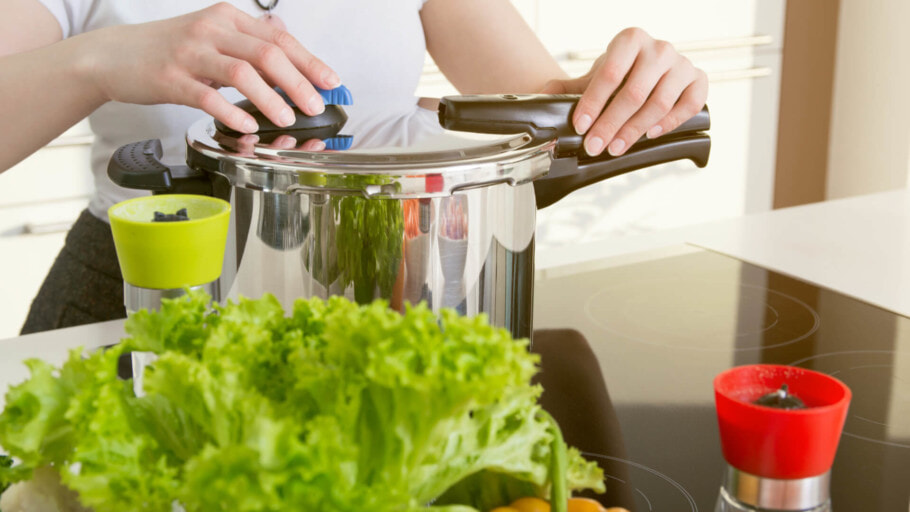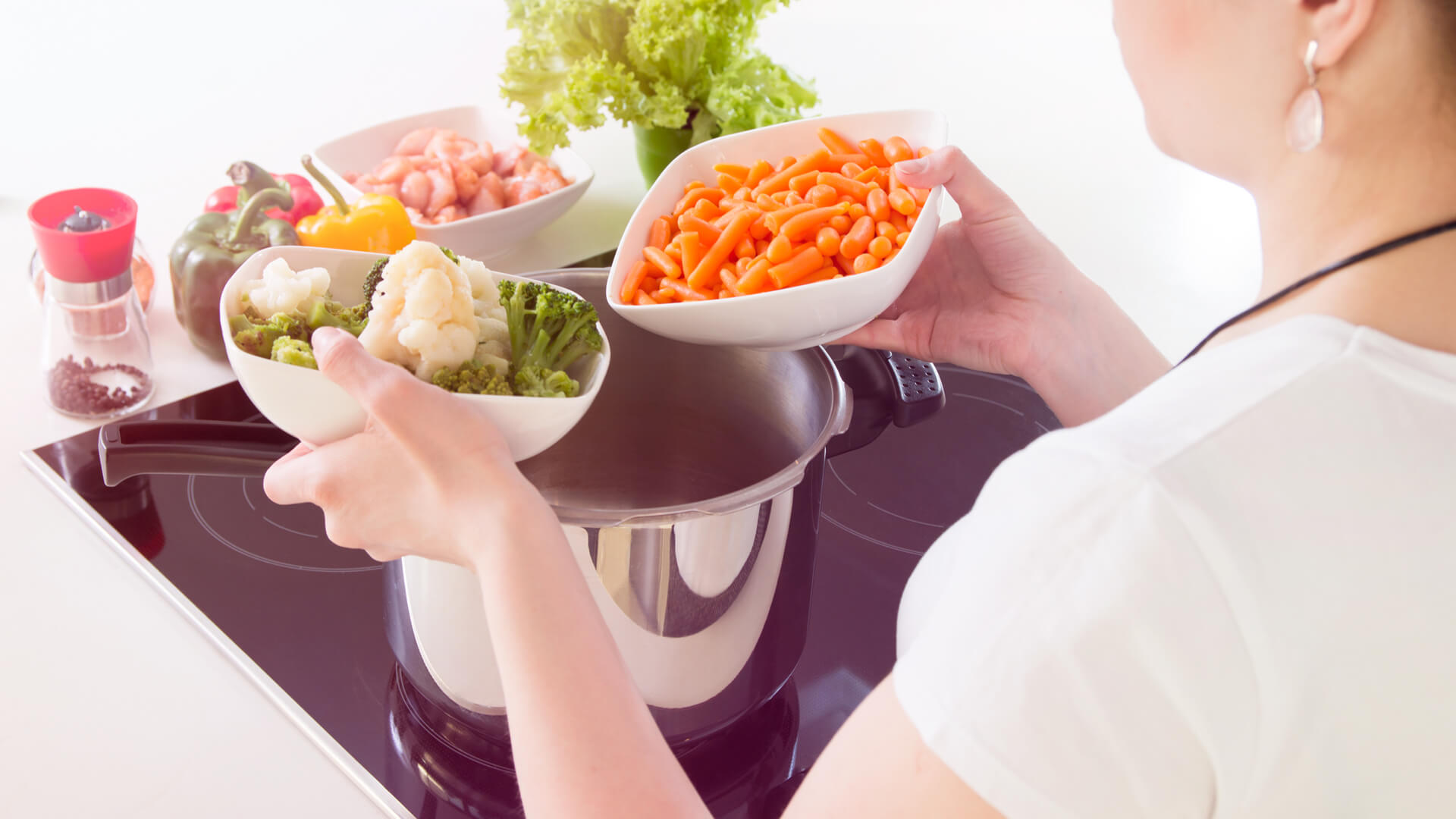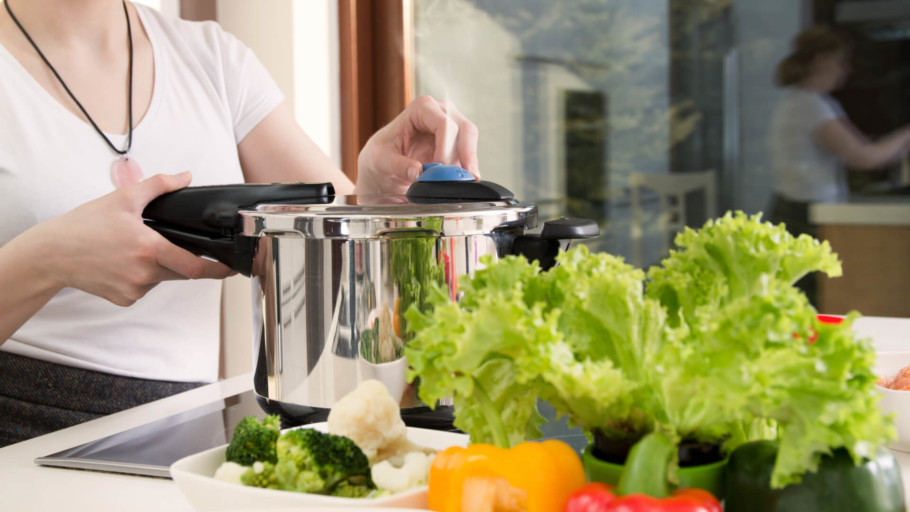Are Pressure Cookers Safe? What you Need to Know
Pressure cookers make it easier than ever to cook quick, delicious meals: simply load up the pot with your favorite meats, ingredients, and broth, hit the timer or the stovetop, and you’re good to go. Regardless of whether you’ve used pressure cookers for years or never touched one in your life, you’ll nevertheless need to make sure you have the basics of pressure cookers down before you start cooking. As the name implies, pressure cookers are under tons of stress, so if they are mishandled some serious injuries are likely to occur.
For some, pressure cookers seem too dangerous or too unstable to operate. Once you review the best practices and understand how these appliances work, however, there’s no reason you shouldn’t be able to operate one safely. This article gives you what you need to know about pressure cookers, safe practices, and cooking with confidence.
How Pressure Cookers Work
Pressure cookers operate on the simple principle that cooking under pressure means cooking more evenly, effectively, and efficiently. There are two major factors to pressure that allow for this to happen, the first of which being the issue of boiling points.
Under normal atmospheric pressure, water boils and begins to release steam into the air around 212 degrees Fahrenheit or 100 degrees Celsius. In a pressure cooker, however, this temperature is far lower. That means that electric pressure cookers don’t need to reach these temperatures to cook your food, nor do you need to heat your stovetop pressure cooker nearly as long. Lower temperatures for cooking are safer and more energy efficient.
The other major factor in a pressure cooker speed and efficiency is the effect pressure has on steam and heat. The food inside of the pressure cooker is trapped with high-pressure steam released from the boiling water or liquid. This steam is quite literally forced into the food from all possible angles, which means that your food hydrates and fills with flavor as it cooks due to the temperature and pressure. As a result, you won’t need to worry about hitting the right temperature in the pot. Likewise, if you’re using an electric pressure cooker, you can easily cook food perfectly each time by using the preset timers and letting the pot do all of the work.
Creating the pressure needed to gain the benefits of a pressure cooker, however, is no easy task, so you’ll need to make sure you’ve done all you can on your end to ensure you can hit a safe pressure and open your cooker without risk of scalding yourself or rupturing the cooker itself.

Do’s and Don’ts of Pressure Cooking
All currently-sold pressure cookers should come with instructions detailing the best practices and operating procedures, but in case you want a refresher on how to safely operate your appliance, keep the following do’s and don’t in mind:
Do: Follow the Presets
On electric pressure cookers, preset timers have been loaded onto the machine by manufacturers to ensure food cooks properly and thoroughly. These timers correspond to some of the best and most popular dishes made with pressure cookers, so odds are high that your pressure cooker offers a timer perfect for your dish.
While many pressure cookers offer a way to cook without a timer or set your own preset values, we highly recommend sticking with preset timers for your first few batches. Likewise, if you find your pressure cooker doesn’t have a timer that matches your prospective dish, don’t fret: many manufacturers now offer online instructionals and applications to help you determine the best way to cook your meal with their models.
Don’t: Overfill the Cooker
Most pressure cookers come with failsafes to ensure that no damage comes to the consumer should the pot be overheated, and one of the most effective of these failsafes are the vents and regulators that often line the top of the unit. Pressure cookers, generally speaking, should not be filled over two-thirds of their capacity. Doing so may pose a risk of food particles clogging or blocking vital ventilation and regulators designed to keep you safe.
This is especially important to remember when cooking rice and other foods that grow significantly during the cooking process. For a pot full of rice, you may want to avoid filling the pot over halfway to be safe. If you’re not sure of the specific marking to hit, check your instruction manual for a guide or your pressure cooker for an internal max fill line.
Do: Use Enough Water
Pressure cookers rely heavily on steam for the cooking process, so always be sure to add enough water or other liquid to cook the food. For slow roasts, broth will often serve as enough moisture to cook the foods. For dryer dishes, though, it may be worth adding extra liquid to ensure the cooking process goes smoothly.
The often-cited metric for standard pressure cookers is one half cup of liquid or water for a full pot of food. You may need to experiment with amounts with your first few dishes, but make sure you’re setting your meals up for success by ensuring there’ll be enough steam to penetrate the food during the cooking process.
Don’t: Use Oil
Finally, most pressure cookers are not going to be able to handle any more than a miniscule amount of oil. It is highly recommended that you never put oil in a pressure cooker.Depending on the type of oil, pressure cookers create an environment that can push oil past its smoke point and allow it to catch on fire. This can cause explosions, extreme fire damage, and destruction of property. Be sure to avoid oil entirely when using a pressure cooker or simply aim for a scant amount whenever possible. Never use more than a quarter cup of oil in a pressure cooker.

Frequently Asked Questions
Now that we’ve gone over a few do’s and don’ts, here are the answers to a few frequently asked questions about owning and operating a pressure cooker:
What’s the safest PSI?
You’ll typically find that most pressure cookers, either electric or stovetop, top at around 15-20 pounds per square inch, or PSI. Most are designed to release excess pressure at this point to prevent overheating the cooker, excess steam buildup, and undue pressure placed on the cooker walls. The safest PSI for your pressure cooker, however, is going to depend entirely upon your manufacturer and model number. Always be sure to know the highest PSI allowed by your pressure cooker, and make sure you keep that number in mind when cooking or using recipes involving pressure cookers online. You may need to adjust certain recipes and cook times to match your pressure cooker PSI.
How do I safely release pressure?
Under normal circumstances, when a pressure cooker is heated to the point where the PSI exceeds the maximum allowed limit, a gasket opens to release pressure and ventilate the pot. These gaskets are designed to maintain the highest PSI allowed, so their activation won’t stop the cooking process.
Should you need to release all pressure manually for either an emergency or other purposes, however, you’ll need to locate the emergency release valve. On stovetop cookers, you can often lift the gasket (using a glove or other utensil) completely to release the internal pressure.
Most electric cookers also come with safety release valves to ensure proper ventilation. When using these pressure valves, make sure to keep your hands and body away from the released, scalding fumes. Just be sure to never open the pressure cooker without first releasing the pressure. Doing so can cause explosions and damage to the unit.
How do I clean my pressure cooker?
Cleaning your pressure cooker is going to require focus on two elements: the pot itself and the gasket and ventilation systems. While cleaning the pot is relatively straightforward, you need to make sure the pressure release valves are free and clear of all food particles. You can use a wire brush or included cleaning supplies with your pressure cooker to clear these sections out. Failure to do so could be very dangerous, so always be sure to look to your manual and clean out all listed sections and valves.

Pressure Cooker Best Practices
Still want to make sure you’re doing all you can to use a pressure cooker safely? Try out the following best practices to make sure your meals always go according to plan:
Check Your Rubber Gasket
If you’ve owned your pressure cooker for a while, it may be time to check on the quality of your rubber gasket, which is the element on a pressure cooker provides the airtight seal necessary to pressurize the pot. Repeated use can cause this rubber gasket to lose its seal and release air over time.
It’s often recommended that you replace your rubber seals and gaskets annually provided you use the pressure cooker somewhat often. If you’ve owned your pressure cooker for years and haven’t checked on the gasket, it may be worth seeking out either a replacement for the gasket or for the entire pressure cooker.
Using Locking Cookers
For those who prefer stovetop pressure cookers, finding a model with a locking handle can be crucial. When working in the kitchen, it can be easy to need to move the pressure cooker off of the heat or to another stovetop. Locking cookers make this process easier by allowing you to move the cooker without posing a risk to the seal. While this feature is common among modern pressure cookers, you may want to make sure that any older cookers come with this option.
Going Electric
Finally, some of the best pressure cookers on the market today utilize electric power and internal heaters to operate. While stovetop pressure cookers may be able to hit higher pressures overall, the ease of use and safety features built into an electric pressure cooker are second to none. Electric pressure cookers come with simple controls, a host of instructions and sample recipes, and are often backed by fair warranties and guarantees. Electric pressure cookers are your best bet not only for the best possible meal, but the safest one at that.
Final Thoughts
While there is some inherent danger to cooking food under pressure, the truth is that pressure cookers are far more safe than meets the eye. These cookers are often made to withstand far more pressure than they advertise, and provided you follow our best safety practices and keep in mind our tips and tricks, you never need to fear when using one of these simple and effective cookers.

